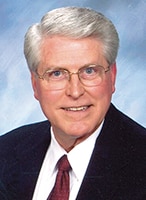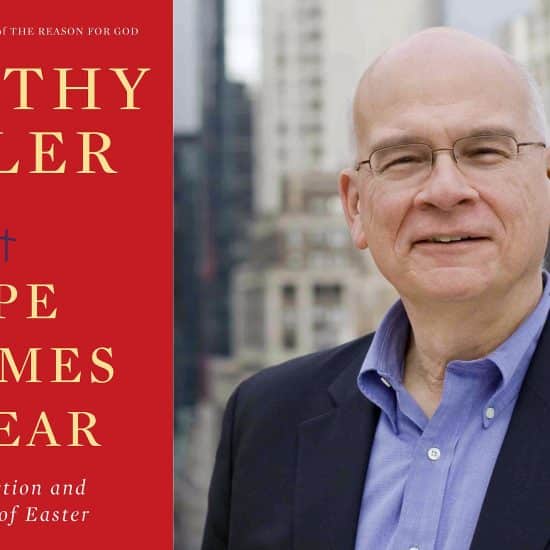 Jesus Sends the Disciples
Jesus Sends the Disciples
Formations: April 1, 2018
Scripture: Matthew 28:1-10, 16-20
 Michael K OlmstedThe final week of Jesus’ earthly ministry is a raging flood of clashing events and emotions. Beginning with the triumphal entrance into Jerusalem with crowds joyously shouting, it concluded with the agony of the cross in what seems like the end of all hope for his followers. Now, it is Sunday again and the world was still wrapped in its hardships and emptiness.
Michael K OlmstedThe final week of Jesus’ earthly ministry is a raging flood of clashing events and emotions. Beginning with the triumphal entrance into Jerusalem with crowds joyously shouting, it concluded with the agony of the cross in what seems like the end of all hope for his followers. Now, it is Sunday again and the world was still wrapped in its hardships and emptiness.
The eleven apostles were locked away in their shuttered dreams, wondering how what had seemed to be God’s promise had now been snuffed out by a partnership of Roman and religious authorities. And it is interesting how Matthew, the most “Jewish” gospel writer, has women as the first of Jesus’ followers to see the risen Lord. But the two Marys had witnessed Jesus’ death and the placement of his body in a borrowed tomb, and, now they are the first to experience the joy of his resurrection.
The apostles had struggled with the idea of Jesus’ death every time he mentioned it. Peter had even resisted the soldiers when they came to arrest Jesus in the garden of Gethsemane, only later to deny even knowing Jesus when questioned in the courtyard of the high priest’s palace adjacent to the Temple (John 18:1-18). Matthew skips over some of the other gospels’ details and plunges headlong into the earthquake and the angel of the Lord “descending from heaven” who rolled back the stone from the tomb entrance “and sat on it” (v. 2). The angel looks like lightning and the Roman guards are so frightened they faint (vv. 3-4). Yet the women seem more captivated than afraid as they hear the angel explain: “Do not be afraid; I know that you are looking for Jesus who was crucified. He is not here; for he has been raised, as he said” (vv. 5-6). Then comes the invitation for them to view the evidence of the empty tomb and then go tell the disciples that Jesus “has been raised from the dead, and indeed he is going ahead of you to Galilee, there you will see him” (v. 7).
With every sentence Matthew’s account accelerates. The two women may be fearful and joyful at the same time, but they are on a mission to tell the demoralized disciples that Jesus’ promise had come true. But they are about to have the most amazing privilege: to be the first to see the risen Lord! He meets them in the garden, where they fall down at his feet and worship him. They touch his feet as a new mother touches her baby’s toes and fingers in wonder. This is no apparition, no substitute. This is the Jesus they have believed, trusted, followed, grieved over and now they celebrate!
Matthew does not linger over the coming of Peter and John to the tomb, or Jesus appearing to the apostles behind closed doors in Jerusalem, or Thomas’ struggle to believe. Compare the other gospels to gain a fuller account. Matthew is moving on to a glorious conclusion – or a new beginning – as Jesus directs, “go tell my brothers to go to Galilee, where they will see me” (v. 15).
Immediately the story moves to Galilee and what we call the “Great Commission.” When Jesus appears to his disciples in Galilee, they worship him, but Matthew reminds us that some still had doubts (v. 17). All the gospel accounts show us disciples who are like us, imperfect, fearful, struggling and holding on to God for dear life.
Matthew is not spinning a tale, he is describing real life. He knows the history of his people, the richness and importance of God’s Law, the elaborate rituals and sacrifices of Israel, and that Jesus is God’s promised Messiah for all the world. There is electricity in his words, joy and hope, as he records Jesus’ promise and calling to all who believe he is God’s Son. With the authority of heaven Jesus says to every generation of believers: “Go … make disciples of all nations … baptizing them in the name of the Father and of the Son and of the Holy Spirit … teaching them to obey everything that I have commanded you. And remember, I am with you always, to the end of the age” (vv. 19-20). “Go and tell” is the recurring theme from the angel at the garden tomb, from Jesus’ appearance to the women, to the disciples in Galilee, and to our generation. Even though 2000 years have passed the urgency to tell the world about God’s love in Christ has not lessened.
Easter has become a familiar holiday on our calendar, another special event for church programming, a kind of universal spring holiday, one of those quaint old fashioned stories. Matthew is not using a resurrection metaphor. This is the only authentic hope for a world mired in its own self-made hell, a culture of selfishness and violence, the idea that we can create some sort of heaven on earth by sheer willpower. Fox News, MSNBC, and a hundred other news outlets could learn a valuable truth from Matthew.
Think about how you would have reacted as a participant in Matthew’s account. How are you reacting to Jesus’ resurrection today? Are you telling someone about this Jesus who lived and died in the real world because God loves us so much? Is his death and resurrection shaping the way you think, live, and relate to others?
As human beings in the physical world we know about fear, uncertainty, failure and doubt. The resurrection is hard to hold on to, even when we use lovely metaphors like butterflies, changing seasons, and seeds springing to life. But with the testimony of the cycle of our universe and time, the Bible records God’s unceasing endeavor to communicate his love, in the context of real people, and finally through his own Son becoming one with us. Some of Jesus’ closest disciples still struggled with doubt even after his resurrection. Doubt is one element in a growing faith which can push us closer to God. It worked for a disciple named Thomas (John 20:24-29).
Jesus’ words about making disciples and baptizing are not confined to professional missionary programs. By the end of the first hundred years following Jesus’ resurrection the message of God’s love had spread across the Roman Empire and beyond without the benefit of a denominational structure or professional fundraisers. How could this be? Real people, like me and you, simply told others about God’s love, shared the Jesus story, lived by biblical standards and showed the difference faith can make in a life. You become the messenger, the expression of God’s love that no book or program can replace. You are one of Jesus’ disciples sent out to the world.
Retired after almost 50 years in pastoral ministry, Michael K. Olmsted enjoys family, supply preaching and interim work, literature, history, the arts and antiques.
Formations is a curriculum series from Smyth & Helwys Publishing, Inc. through NextSunday Resources.
The PDF download requires the free Acrobat Reader program. It can be downloaded and installed at https://get.adobe.com/reader (uncheck optional offers first).



